The Giant’s Causeway is one of Northern Ireland’s most known natural beauty and an UNESCO World Heritage Site. Famous for its remarkable hexagonal basalt columns, panoramic views and rugged cliffs, the Giant’s Causeway is a location rich in myth and history. Based on my latest trip, this article will guide you through the best sights and activities at the Giant’s Causeway, from its iconic stones to the stunning coastline surround
Table of Contents
The Giant’s Causeway: A Natural Wonder
The Giant’s Causeway is famous for its 40,000 interlocking basalt columns, formed millions of years ago by volcanic activity. According to legend, the giant Finn McCool built these columns to create a bridge between Northern Ireland and Scotland. However, the geological explanation is even more fascinating. The columns formed when volcanic eruptions cooled and contracted lava, resulting in the distinctive shapes we see today.
PLAN YOUR TRIP TO NORTHERN IRELAND
Stay connected in Northern Ireland with a giffgaff free SIM or an Airalo eSim for data coverage that works seamlessly throughout the whole UK. Plus, dive into everything you need to know about renting a car in Ireland, so you can easily explore incredible attractions like the Giant’s Causeway.
The Giant’s Causeway is a perfect place to explore on foot, with multiple walking paths that lead visitors to the heart of this incredible natural wonder. As you walk across the columns, you can admire their geometric symmetry and the sheer scale of the formations.

In addition to the basalt columns, there are various types of rocks, some with unusual shapes, such as booths. You can recognise them thanks to the descriptions of your guide or audio tours.
Be sure to take some time to appreciate the view, as on a clear day, the Giant’s Causeway offers panoramic vistas of the North Atlantic and the Scottish coastline. Unfortunately, the weather was not very good during my visit, and the was a lot of fog around the basalt columns. Despite this, I can assure you that the scenery was still breathtaking, and the place felt truly magical.
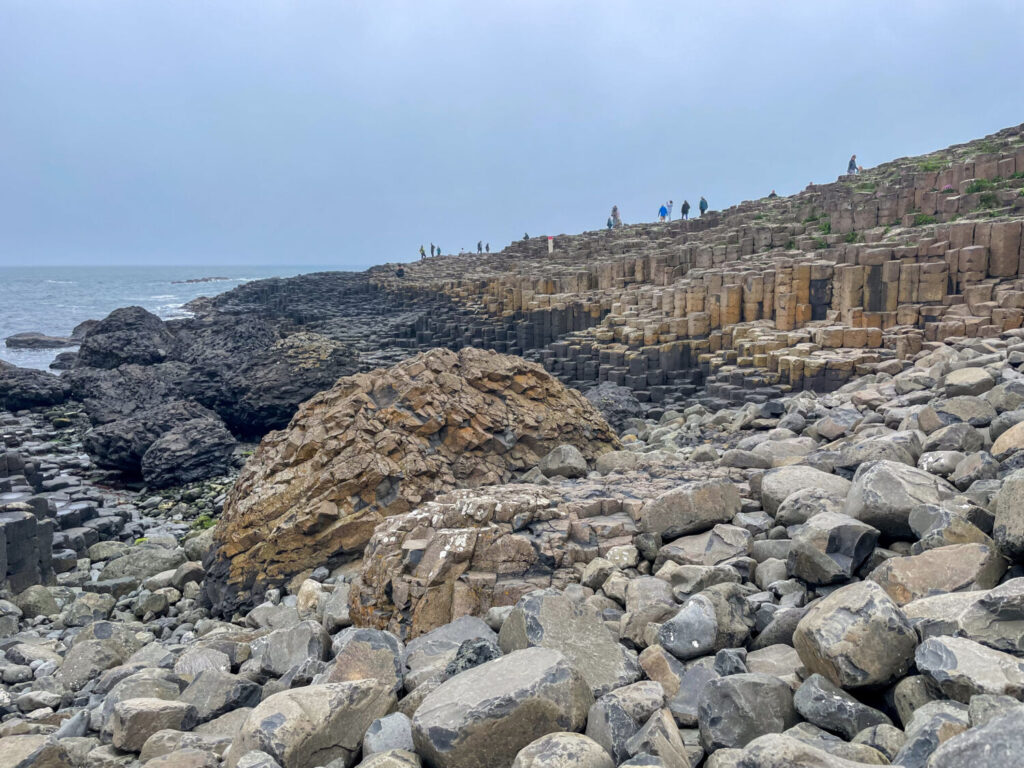
The Formation of the Basalt Columns at the Giant’s Causeway
The geological formation of the basalt rocks of the Giant’s Causeway is fascinating. It dates back 60 million years when all the land masses were united in a single continent called Pangaea.
When Pangaea separated to form the Atlantic Ocean, lava from the faults expanded over much of County Antrim and the islands of Scotland. Once cooled, the lava turned to basalt, producing the characteristic rocks stretching from Cave Hill near Belfast to Binevenagh, a mountain in County Derry/Londonderry.
Climate change then led to the formation of a layer of red rock called laterite, on which a further layer of basalt, the ‘columnar’ layer, rests.
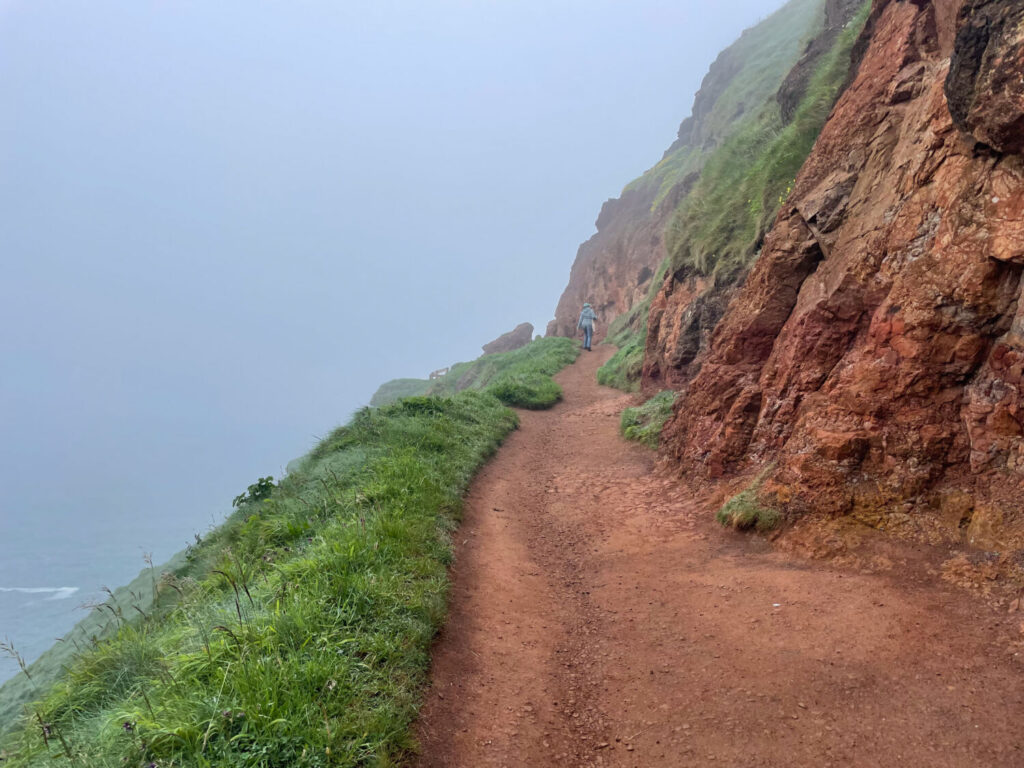
The second basalt layer also originates from lava flows. Its unique shape results from the formation of cracks during the cooling process, along with subsequent eruptions that occurred repeatedly over the next 40 million years, culminating in the last ice age.
The Other Causeways
The Giant’s Causeway is certainly the most famous rock formation, but there are others in the same geological area. These include Fingal’s Cave on the Isle of Staffa in Scotland, which according to legend was connected to the Giant’s Causeway by the bridge built by the giant Finn McCool.
Further away from Ireland, other cobblestones can be found on the Faroe Islands, in the Svartifoss’ black waterfalls’ in Iceland, on Disko Island in Greenland, but also further south, on Flores Island in the Azores and on La Gomera in the Canary Islands.
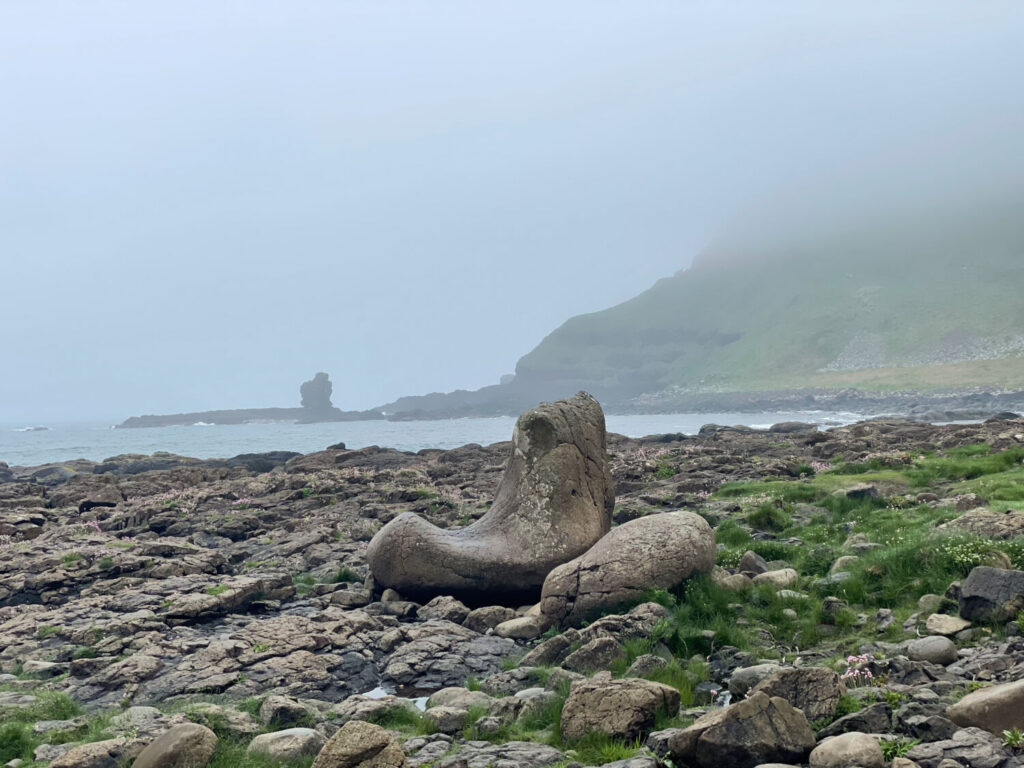
The Giant’s Causeway Trails
To experience the stunning basalt columns and breathtaking scenery of the Giant’s Causeway, you can choose from different scenic routes, categorized by difficulty.
- Green Trail: this is the easiest route. It starts at the Causeway Hotel and arrives at a viewpoint in 15 minutes.
- Blue Trail: medium difficulty, 1.2 km long. 25 minutes from the Visitor Centre, you can see the basalt columns and the most famous rocks, such as the Camel, the Giant’s Grandmother, the Flint and the Giant’s Boot. I have walked this path, and I can assure you that it is suitable for everyone, even those without special training.
- Red Trail: difficult. It links up with the Blue Trail and makes a 3 km loop.
For more experienced hickers, an even more challenging path links up with the Giant’s Causeway Coastal Path and the Ulster Way. Conversely, if you have difficulty walking but still want to see the spectacular basalt columns up close, you can use the Translink Accessible Bus, a shuttle service is in operation at the Giant’s Causeway, running from the rear of the Visitor Centre to the Grand Causeway and back. This shuttle service costs £1/ €1.20 and is free for National Trust members.
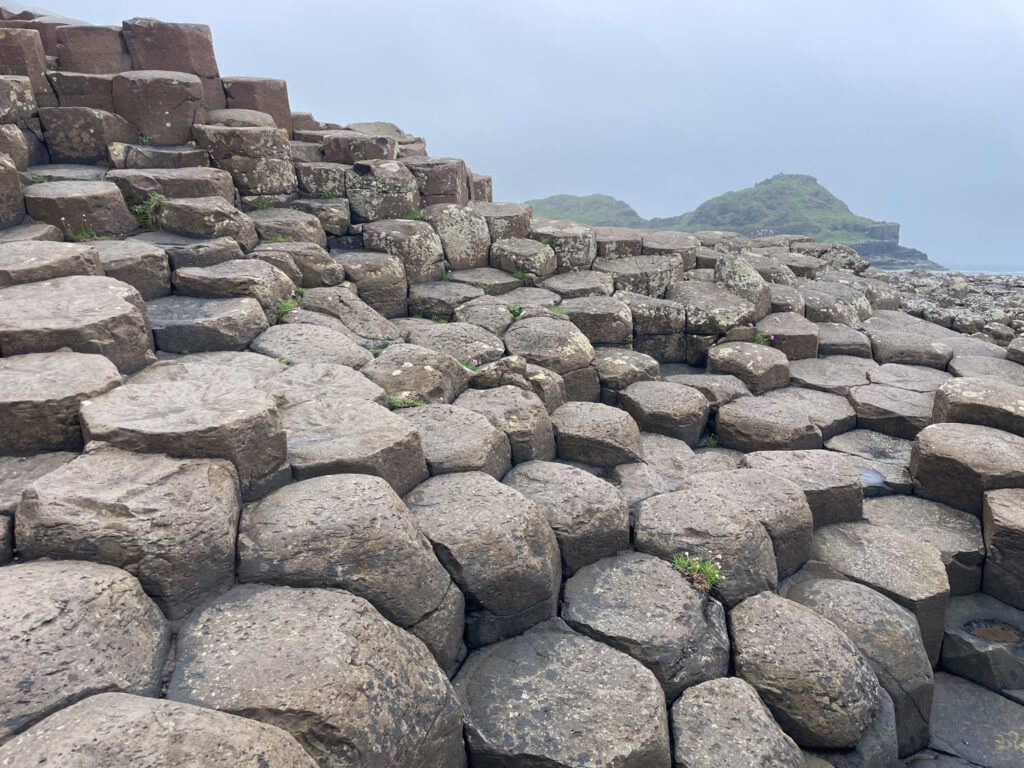
Exploring the Surroundings of the Giant’s Causeway
You can discover the surrounding area on foot or by car. The Giant’s Causeway Coastal Path is a spectacular route along the coastline, while the Causeway Coastal Route is an incredible scenic drive.
My friends, Marina (The Travelling Petsitter) and Lucia (Risparmi e Viaggi), and I travelled by car, stopping at the most interesting attractions along the way for short treks through charming villages, ancient castles, and dramatic cliffs, including The Gobbins Path and the Carrick-a-Rede Rope Bridge.
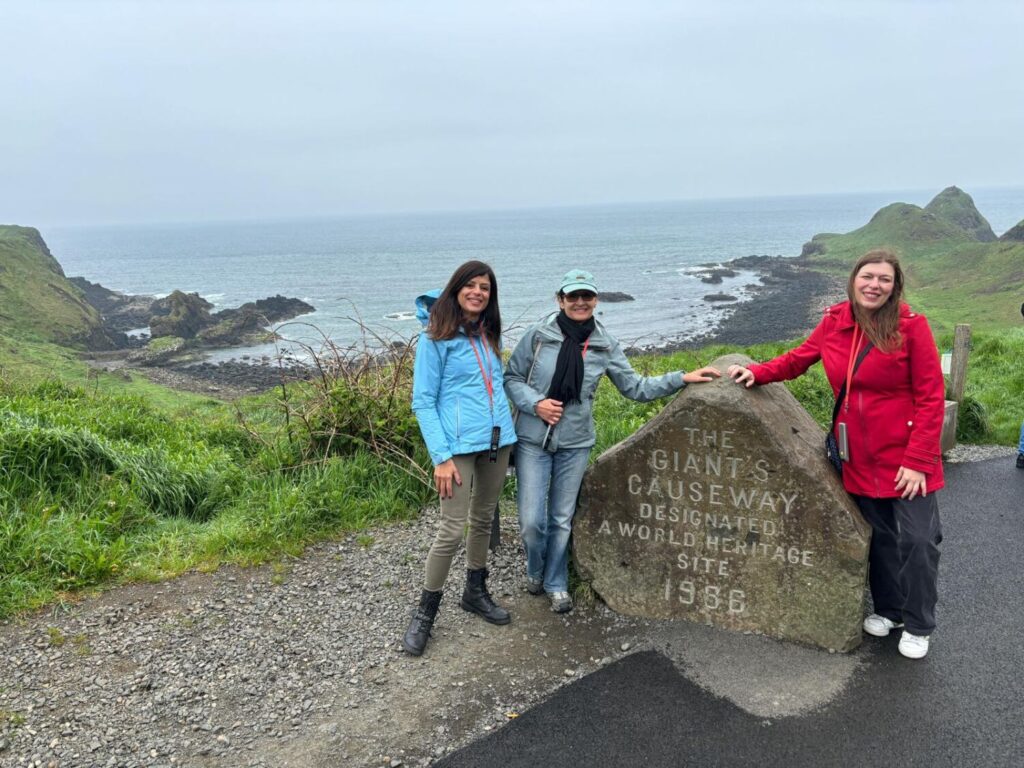
Giant’s Causeway Coastal Path
The Giant’s Causeway Coastal Path is a 33-mile-long trail that connects the region’s most iconic landmarks. It offers a mix of moderate to challenging sections, making it suitable for hikers of varying skill levels. From here, you can easily reach Carrick-a-Rede Rope Bridge, Dunluce Castle and more. Along the way, hikers can stop at charming villages to explore local pubs and cafes.
The Giant’s Causeway itself is a geological wonder, with its famous hexagonal basalt columns. As you walk the trail, you’ll encounter rich wildlife, including seals, seabirds, and, in some lucky cases, dolphins and whales.
Causeway Coastal Route
The Causeway Coastal Route is one of the most famous scenic drives in the world. The 120-mile road stretches from Belfast to Derry, passing through some of the most stunning landscapes Northern Ireland has to offer.
As you drive along the coastal roads, you’ll see a striking contrast of landscapes, including cliffs, beaches, and rolling hills, set against historic towns and villages.
The drive is easy, and it’s a good way to see all the attractions around the Giant’s Causeway over a couple of days, as I did with my friends.
Historical and Cultural Attractions Around the Causeway
While the Giant’s Causeway itself is the star of the show, the surrounding area is rich in history, culture, and myth. Here are some must-see attractions that I recommend you visit during your trip.
Dunluce Castle
Dunluce Castle, perched on a cliff above the Atlantic Ocean, is a stunning 16th-century ruin in Northern Ireland. Once the stronghold of the MacDonnell family, it offers breathtaking views of the coast and wild seas. You can explore the remaining structures, including the great hall and defensive walls while learning about the castle’s rich history through interpretative displays.

The Gobbins Path
The Gobbins Path is an exciting coastal walk along cliffside paths, through tunnels, and across bridges above the North Channel’s turbulent waves. Opened in 1902 as a tourist attraction, it fell into disrepair but reopened in 2015. The path is mostly easy, apart from a small tunnel carved into the cliff.
Hikers can enjoy breathtaking views of the ocean, rugged cliffs, and wildlife, including seabirds and seals. I particularly loved observing seagulls and puffin nests at the end of the path.
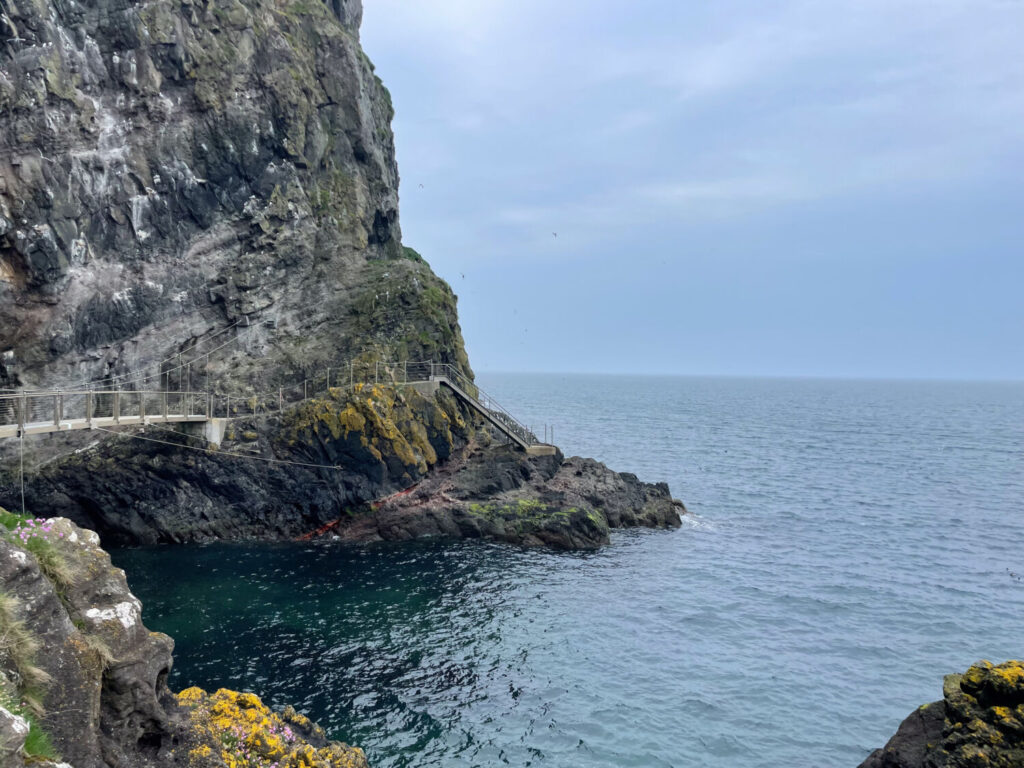
Carrickfergus Castle
Carrickfergus Castle, a well-preserved medieval stronghold located on the shores of Belfast Lough, is one of Northern Ireland’s most impressive historical sites.
Built by the Normans in the 12th century, it has served various roles, including royal residence and military stronghold, and played a significant part in conflicts like the Irish rebellion and the Cromwellian conquest. Today, you can explore its ramparts and interiors, with a museum showcasing artefacts such as weaponry and armour.
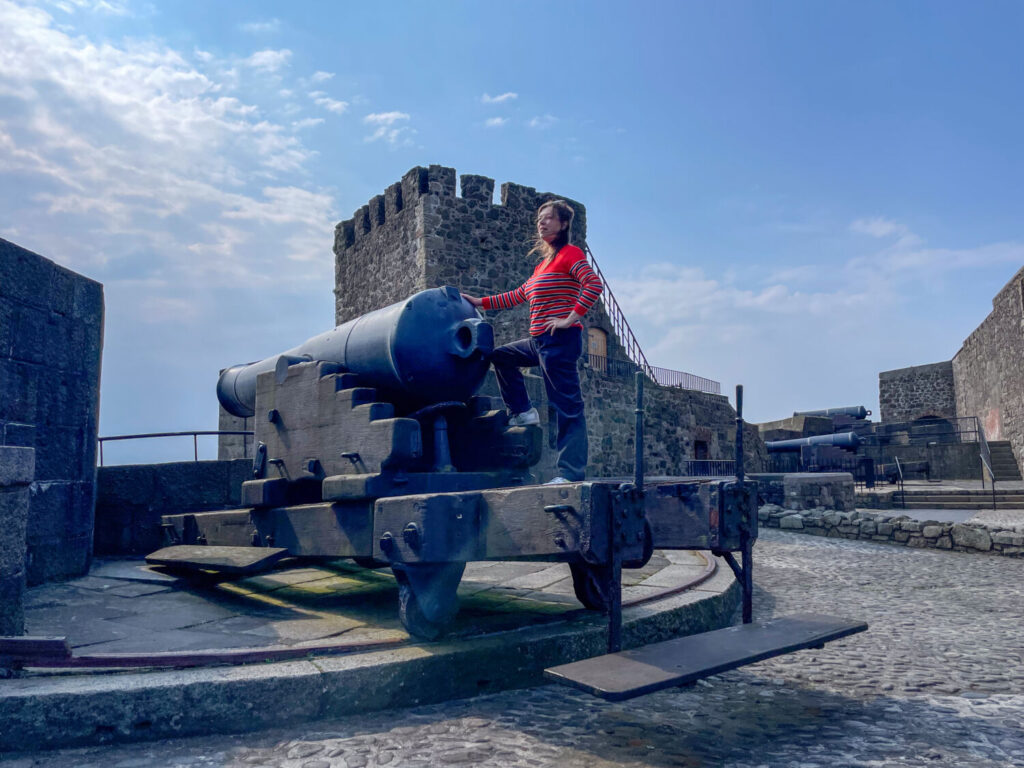
Carrick-a-Rede Rope Bridge
The Carrick-a-Rede Rope Bridge was originally built by fishermen for salmon fishing. Spanning 30 meters (98 feet) across a deep chasm, the bridge connects the mainland to the small island of Carrickarede.
Today, it is a popular tourist attraction known for its stunning views of the Atlantic Ocean and the Antrim Coast. I highly recommend experiencing the thrilling crossing of the bridge and the tranquillity of nature on Carrick-a-Rede Island.

The Dark Hedges
If you’re a Game of Thrones fan, the Dark Hedges is an absolute must-see. Located about 30 minutes from the Causeway, this beautiful avenue of beech trees has become famous for its ethereal, tunnel-like appearance. The Dark Hedges were also used as the setting for the Kingsroad in the hit television series.
We did not include The Dark Hedges in our trip, but it is such a popular destination that I have added it to this list in case you are a fan of these TV series.
Practical Tips for Visiting the Giant’s Causeway
The best time to visit the Giant’s Causeway is from late spring to early autumn. During these months, the weather is warmer and more pleasant.
Hovewer, keep in mind that the weather in Northern Ireland can be unpredictable, changing quickly and sometimes being foggy or rainy, as I experienced on my visit.
Nonetheless, don’t let the weather discourage you. Even in less-than-ideal conditions, witnessing the Giant’s Causeway and its stunning basalt columns is a unique experience. To avoid crowds, I recommend you to visit the Giant’s Causeway early in the morning or later in the evening.
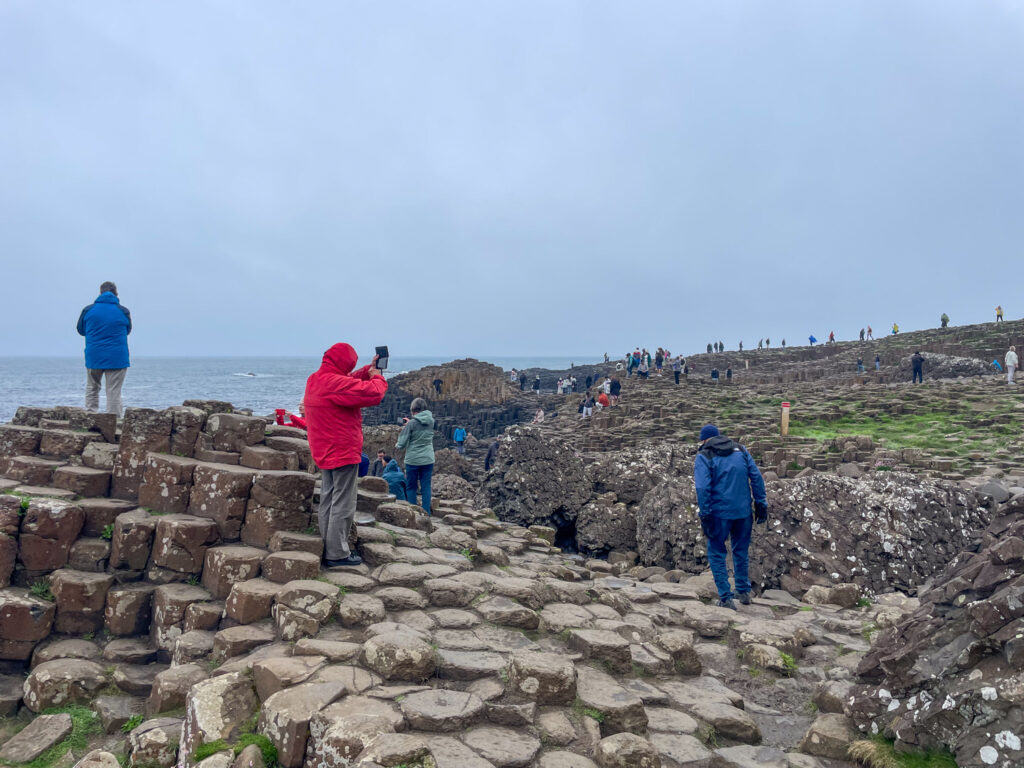
How to Dress to Visit the Giant Causeway
Be sure to bring comfortable shoes, as you’ll be doing a lot of walking, especially if you plan to explore the hiking trails. Since the weather can be unpredictable, in summer it’s wise to bring a light jacket and sunscreen, while in winter warm clothes, gloves and a hat.
Additionally, don’t forget a water bottle and your camera or your smartphone to take pictures. There are countless opportunities for amazing photographs along the Causeway, even with a bad weather.
The Visitors Centre
The Giant’s Causeway Visitor Centre is the gateway to the stunning basalt rock formations, providing an excellent opportunity to understand this iconic landmark better.
The building’s basalt façades are designed to create unique patterns similar to the natural shapes of the Causeway’s columns. The structure has no right angles, as the architects crafted a series of non-repeating patterns that fit together like a giant jigsaw puzzle.
The Visitor Centre features interactive exhibits about the Causeway’s formation and the legends surrounding it. Here, you can also book guided tours or rent audioguides, which I totally recommend for discovering information and curiosities such as rocks in funny shapes along the path.
Additionally, the Visitor Centre includes a café where you can enjoy a light snack or a coffee, and there is a souvenir shop offering a variety of items, including lovely Irish wool jumpers and guidebooks.

Guide and Audioguide to Visit the Giant’s Causeway
When visiting the Giant’s Causeway, a guide or audioguide can significantly enhance your experience by providing valuable context and historical insights about this UNESCO World Heritage site. The Visitor Centre offers guided tours and audioguides to help you make the most of your visit.
Whit a local guide, you can discover the Causeway’s geological formation and local legends, such as the famous story of the giant Finn McCool. On the other hand, if you prefer to explore the area at your own pace, the audioguide can be a better option.
The audioguide offers a detailed commentary about the geology behind the hexagonal basalt columns, history, and tcultural significance too, while allows you to stop and listen to explanations at your convenience, ensuring you don’t miss any of the site’s highlights.
Audioguides are also available in multiple languages. We chose audio guides because my travelling companions wanted to hear the explanations in Italian, their main language.
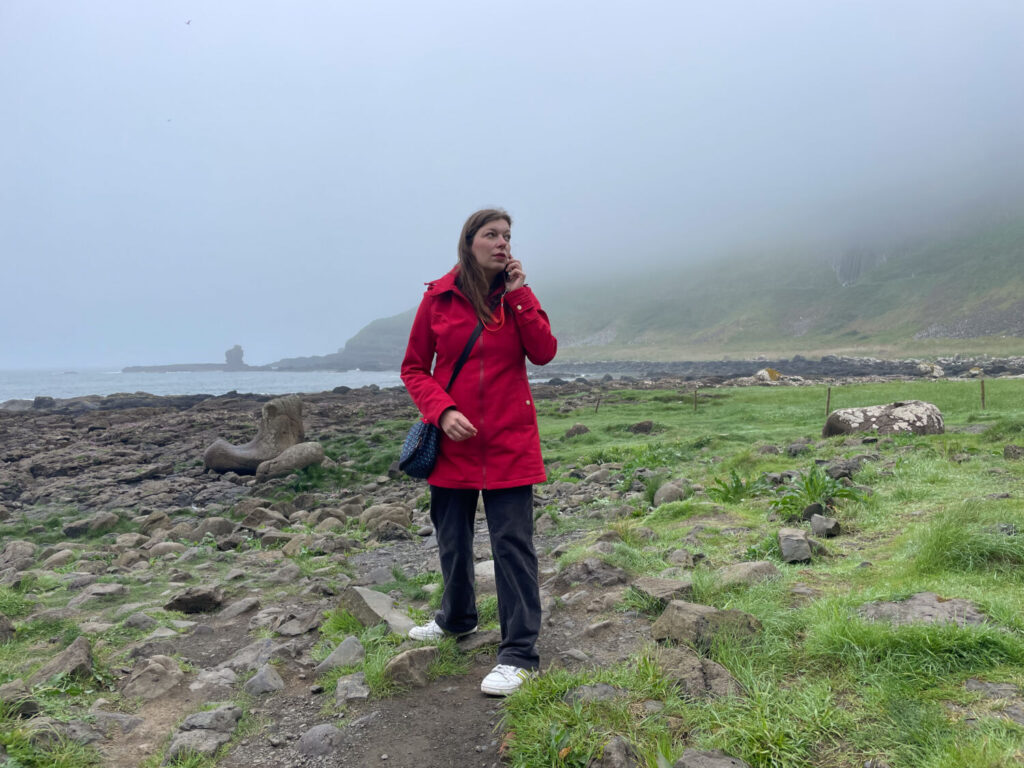
How to Reach the Giant’s Causeway
The Giant’s Causeway is easily accessible by car. We rented a car at Dublin Airport and drove along the attractions of the Causeway Coastal Route. For reference, the Giant’s Causeway is only about an hour’s drive from Belfast.
The entrance to the Giant’s Causeway is on Causeway Road, where the Visitor Centre is. Parking near the Giant’s Causeway is limited. The main car park, adjacent to the Visitor Centre, is reserved for National Trust members and Visitor Experience ticket holders. The Causeway Coast Way Car Park, located at 60 Causeway Road, is available for visitors wishing to walk the network of trails; parking there costs £10 per car.
Honestly, it is not very clear to determine the right car park. A valet in front of the Visitors Centre invited us to park in the nearby hotel car park for a cost of £10. Still, we couldn’t tell whether it was legitimate or part of a visiting service.
Giant’s Causeway
44 Causeway Road, Bushmills
County Antrim, BT57 8SU
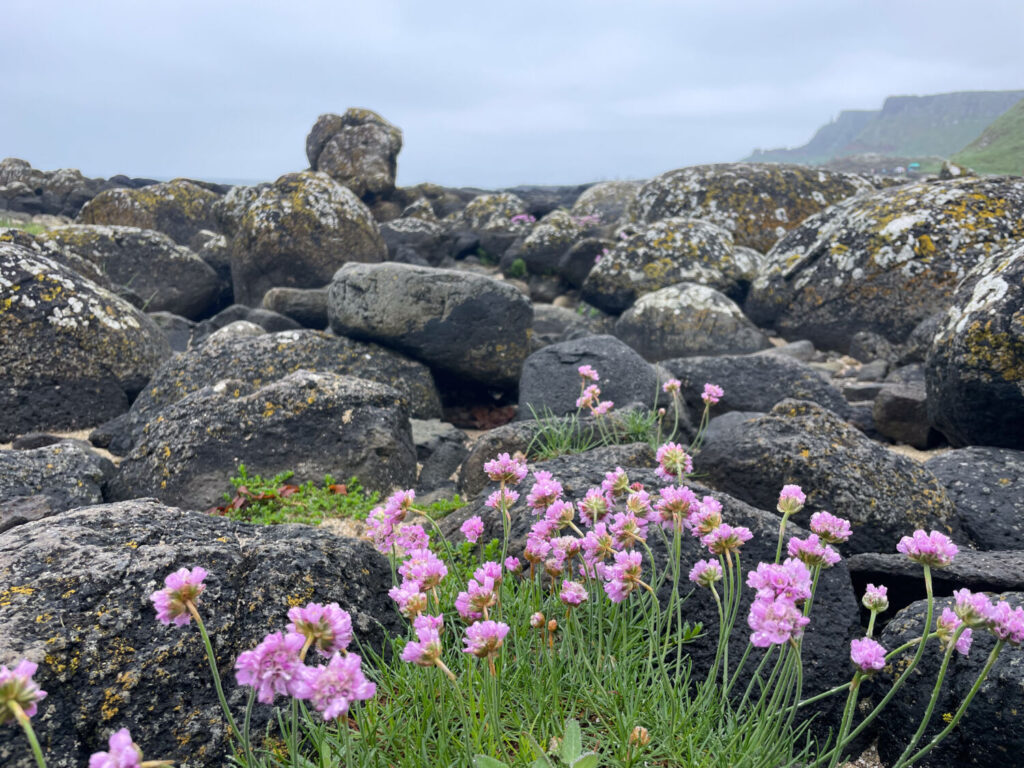
Alternative Way to Reach the Giant’s Causeway
Alternatively, you can take a bus from nearby towns like Ballymoney or Portrush. If you prefer to walk, the Giant’s Causeway Coastal Path is a 33-mile stretch of Ireland’s most celebrated coastline. This route connects to the Giant’s Causeway trail network.
You can also reach the Giant’s Causeway by bicycle via Route 93 of the National Cycle Network in Northern Ireland. The cycling path runs along the coast from Newry to Ballycastle, passing through Bangor and Belfast.
Additionally, guided tours provide transportation from Belfast and Dublin, along with expert commentary throughout the journey. It is probably the easiest way to visit the Giant’s Causeway if you prefer not to drive and want to take a day trip from Belfast or Dublin.
In short, the Giant’s Causeway and its surrounding area are must-visit destinations for anyone travelling to Northern Ireland. I’m pretty sure that everyone can find plenty to do and see, from the awe-inspiring geological formations to the charming coastal villages and historic landmarks. Feel free to share your thoughts and experiences about the Giant’s Causeway in the comments.

2 comments
An incredible place and a fabulous route along the coast!! I loved it
I totally agree with you ❤︎